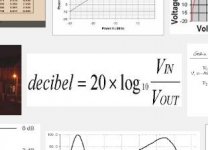That's a formula for calculating the gain through a network, though the author chose to assign positive values to attenuation and negative values to amplification. Even though the sign convention seems backward to most of us, it's quite valid as long as you are consistent. Or at least as long as you make sure the folks you're communicating with understand your choice of sign conventions.
It's not too difficult to find current examples using this sign convention. Have you ever used a phrase such as, "Distortion products are 100 dB or better."? The phrase implicitly assumes that we are talking about the ATTENUATION of distortion products relative to some reference, not the amplification of distortion products. If I had written the statement as "Distortion products are - 100 dB or better." (note the minus sign!) I would have conveyed the idea just as clearly.
I have been told that until the 1950's or so, telephone engineers and lineman expressed all their measurements, and did their calculations, using attenuation rather than amplification. Since the early analog telephone systems contained more passive devices than active, you rarely encountered amplification. And, by adding up a string of attenuations, you avoided the mental challenges of subtraction and negative numbers.
It's not too difficult to find current examples using this sign convention. Have you ever used a phrase such as, "Distortion products are 100 dB or better."? The phrase implicitly assumes that we are talking about the ATTENUATION of distortion products relative to some reference, not the amplification of distortion products. If I had written the statement as "Distortion products are - 100 dB or better." (note the minus sign!) I would have conveyed the idea just as clearly.
I have been told that until the 1950's or so, telephone engineers and lineman expressed all their measurements, and did their calculations, using attenuation rather than amplification. Since the early analog telephone systems contained more passive devices than active, you rarely encountered amplification. And, by adding up a string of attenuations, you avoided the mental challenges of subtraction and negative numbers.
I have noticed what you mentioned e.g. on wikipaedia but on his site, he has mentioned this formula for gain.
The Various Specs of Operational Amplifiers - Tech articles
I wish it be corrected.
Gajanan Phadte
The Various Specs of Operational Amplifiers - Tech articles
I wish it be corrected.
Gajanan Phadte
- Status
- Not open for further replies.
